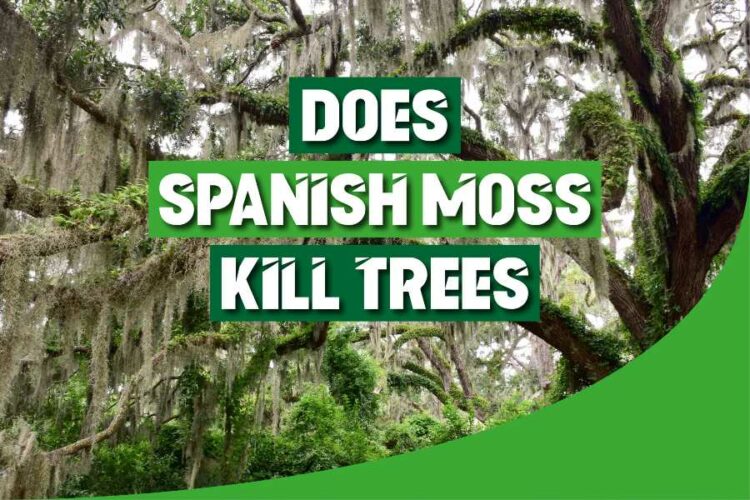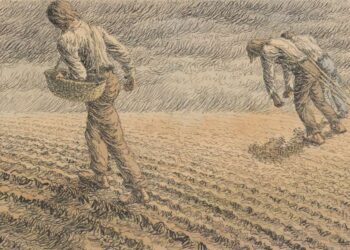Spanish moss, scientifically known as Tillandsia usneoides, is an intriguing and ethereal epiphytic plant that drapes gracefully from tree branches, creating a captivating sight in many regions. However, its relationship with trees has sparked a contentious debate. Some argue that Spanish moss is harmless, while others claim it poses a threat to tree health and survival. In this article, we delve into the question: “Does Spanish moss kill trees?” By examining scientific evidence, dispelling myths, and exploring real-world scenarios, we aim to shed light on this intriguing topic.
Does Spanish Moss Kill Trees?
No, Spanish moss does not directly kill trees. It is an epiphytic plant that relies on trees for support but does not parasitize or harm them. However, under certain circumstances, excessive growth of Spanish moss can potentially weaken trees by increasing wind resistance or shading foliage, indirectly affecting their health.
Understanding Spanish Moss
Spanish moss, scientifically known as Tillandsia usneoides, is an intriguing and unique plant that belongs to the bromeliad family. Contrary to its name, Spanish moss is neither Spanish nor a moss. It is an epiphytic bromeliad that thrives in warm and humid climates, commonly found in the southeastern United States, Central America, and South America.
This fascinating plant has long, gray-green thread-like leaves that drape and hang from tree branches, giving it a distinctive appearance. Spanish moss does not have roots that penetrate the ground; instead, it obtains nutrients and moisture from the air and rainfall. It attaches itself to tree branches using specialized structures called pseudo-roots, which act as anchors and absorb moisture from the air.
Spanish moss plays a crucial ecological role in its native habitats. It acts as a natural filter, absorbing pollutants from the air, and provides nesting materials and shelter for various organisms, including birds, insects, and reptiles. Additionally, it contributes to nutrient cycling by capturing dust and organic matter from the atmosphere.
While Spanish moss relies on trees for physical support, it does not parasitize or harm them. It is not a true parasite and does not extract nutrients from the tree. Instead, it uses the tree as a substrate to grow and thrive. The relationship between Spanish moss and trees is generally considered commensalism, with the moss benefiting from the elevated position and increased exposure to sunlight, while the trees are unaffected or may even benefit from the added insulation and moisture retention provided by the moss.
Benefits Provided By Spanish Moss To Trees
- Moisture Retention: Spanish moss has the ability to absorb and retain moisture from the air and rainfall. When draped over tree branches, it can create a microclimate that helps trap moisture, reducing water loss from the tree’s foliage. This can be particularly beneficial in dry or arid environments, where it helps trees withstand periods of drought.
- Insulation and Protection: The dense and hanging structure of Spanish moss provides a layer of insulation for tree branches. This insulation helps regulate temperature fluctuations by reducing heat gain during hot periods and minimizing heat loss during colder seasons. It acts as a natural buffer against extreme temperatures, protecting the underlying tree tissues from damage.
- Filter for Airborne Particles: Spanish moss acts as a natural filter, capturing and trapping airborne particles such as dust, pollen, and pollutants from the surrounding environment. This can improve air quality in the vicinity of the tree and potentially benefit the overall health of the tree and other organisms in the ecosystem.
- Habitat and Nesting Material: Spanish moss creates favorable habitats for various organisms, including birds, insects, and reptiles. It offers nesting material for birds, serving as a protective layer for their nests. Insects, such as spiders and ants, may find refuge in the tangled mass of Spanish moss, using it as a shelter and a hunting ground.
- Epiphytic Lifestyle Promotion: Spanish moss belongs to the group of epiphytes, which are plants that grow on other plants without causing harm. By thriving on tree branches, Spanish moss exemplifies the potential for diverse plant life and ecological interactions in forest ecosystems. Its presence contributes to the overall biodiversity and ecological balance of the habitat.
Factors Influencing Spanish Moss’s Impact On Trees
- Tree Species Susceptibility and Tolerance: Different tree species may have varying levels of tolerance to Spanish moss. Some trees may be more resistant to its presence and can withstand the weight and potential shading effects without significant impact on their health. In contrast, certain tree species may be more susceptible to the indirect effects of Spanish moss, such as reduced light penetration or increased wind resistance, which can negatively affect their growth and vitality.
- Environmental Conditions and Climate Effects: Environmental conditions, including temperature, humidity, and rainfall patterns, can influence the growth and abundance of Spanish moss. In regions with higher humidity and consistent moisture levels, Spanish moss tends to thrive and may have a more significant presence. Additionally, extreme weather events like storms or hurricanes can potentially dislodge or damage Spanish moss and affect its interaction with trees.
- Competition and Overcrowding: Spanish moss, like any other plant, can compete with trees for resources such as sunlight, water, and nutrients. Excessive growth and overcrowding of Spanish moss can lead to shading, limiting the amount of light available to tree foliage. This can have an indirect negative impact on tree health, as reduced photosynthesis can hinder growth and overall vigor.
- Tree Health and Vigor: The overall health and vigor of trees play a role in their ability to tolerate the presence of Spanish moss. Trees that are already stressed or weakened due to factors such as disease, pests, or environmental stressors may be more susceptible to the indirect effects of Spanish moss. A healthy and well-maintained tree is generally better equipped to tolerate and coexist with Spanish moss.
- Management Practices and Interventions: The management practices implemented in areas where Spanish moss and trees coexist can influence its impact on tree health. Regular tree maintenance, including pruning of branches that are heavily colonized by Spanish moss, can help reduce potential shading and improve tree vitality. Proper cultural practices and proactive management strategies can promote a balanced relationship between Spanish moss and trees.
Conclusion
In conclusion, Spanish moss, despite its captivating appearance, does not directly kill trees. Instead, it is an epiphytic bromeliad that depends on trees for support, while providing various benefits in return. Spanish moss aids in moisture retention, insulation, and air filtration, and serves as habitat and nesting material for organisms. However, the impact of Spanish moss on trees can be influenced by factors such as tree species, environmental conditions, competition, and tree health. By understanding these dynamics, we can better manage and appreciate the complex relationship between Spanish moss and trees in our ecosystems.
FAQ’s
Can Spanish Moss Harm Trees?
Short Answer: No, Spanish moss does not harm trees directly. It is an epiphytic bromeliad that relies on trees for support without extracting nutrients from them.
Does Spanish Moss Kill Trees?
Short Answer: No, Spanish moss does not kill trees. It is not a parasitic plant and does not cause tree mortality. However, excessive growth can indirectly affect tree health under certain circumstances.
What Benefits Does Spanish Moss Provide To Trees?
Short Answer: Spanish moss provides benefits to trees such as moisture retention, insulation, air filtration, and acting as nesting material. It contributes to the overall biodiversity and ecological balance of the habitat.
Can Spanish Moss Damage Or Weaken Tree Branches?
Short Answer: Spanish moss does not directly damage or weaken tree branches. However, the weight of dense growth may increase wind resistance and potentially lead to branch breakage in severe weather conditions.
How Can Spanish Moss Be Managed If It Becomes Excessive?
Short Answer: Excessive Spanish moss can be managed through cultural practices like pruning heavily colonized branches or thinning out the growth. However, it is essential to balance management efforts with preserving the ecological benefits and aesthetic value of Spanish moss.







